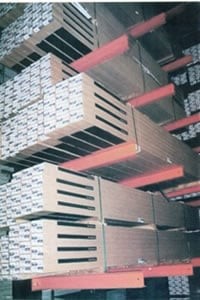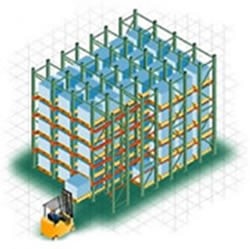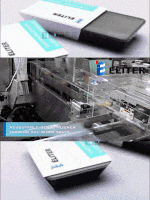The Importance of Using Racks as a Storage System
2022-12-14
What applications does thermal transfer technology have?
What are the benefits of the digital thermal transfer encoder?
It is important for companies to facilitate movements and reduce times within distribution centers, mainly to adjust operating costs, as well as increase productivity and sales. This depends to a large extent on the equipment that companies have (industrial racks), where the opportunity area is located to maximize the potential of the area where the merchandise is intended to be stored and achieve added value in savings due to space rents and merchandise increases.
One way to reduce costs is through the planning and acquisition of equipment that manages and distributes the way to store in a more useful way, for this there are industrial racks in many and very different applications.
There are many variables and depending on these, a study is carried out to determine the system that best suits the current problem. Some of the conditions that can help the decision-making to acquire these equipment is to consider increasing the company’s security, eliminating errors in the order assortment, consolidating customer orders more efficiently, minimizing damage to products, reducing inventories and optimizing spaces.
The decision to acquire the most suitable storage system (racks) should not be seen as the simple fact of buying iron or one more asset, but as the possibility of acquiring the most appropriate solution that contributes to the optimization of the storage process and to increase the profitability of the entire supply chain of the company.
Advantages of using a storage system
The implementation of racks suitable for distribution centers within the supply chain arises from the need to achieve a more efficient, flexible and dynamic distribution, that is, to ensure a rapid response capacity to the customer, in the face of an increasingly specialized demand. The implementation also offers a cost reduction in companies and avoids bottlenecks.
Another advantage is the fact of generating “factory–customer” link mechanisms, which allows adequate attention to small points of sale, with a high rate of entry and exit of products, which usually have a short time to place their orders or a very short period for their commercialization.
Rack design in the distribution center
The requirements are met, they are modernized and simplified and finally it is designed in terms of efficiency, that is, at minimum cost.
From this perspective, the appropriate selection of racks is contemplated depending on the goals and objectives pursued in the distribution center, as well as the evaluation metrics of each company.
And depending on the operating requirements of the distribution center related to variables such as turnover and service objectives such as:
- Number of orders to be filled per day
- Shipped parts/hour
- Rate of returns
- Type of logistics units and their characteristics: weight, dimensions, packaging, etc.
- Selection of the transport mechanisms and degree of automation of these to move the logistics units within the CD: forklifts, skids, conveyors, etc.
All these factors, and others not mentioned, should respond to the conceptualization of a solution developed by those who design the distribution operations, will generate the selection of rack types: Selective, Drive in, Push back, Pallet flow, or a combination of these, which will impact the total value of the equipment and obviously the expectation of return on investment in each case. Only when analyzing the operational variables of a CD can there be elements to select the right mix of racks that will generate value if it manages to impact three key variables of any company: reduce costs, increase sales and / or increase productivity.
Accommodating the racks and goods in a more appropriate way gives a greater volume and less is paid for rent because they optimize the space. Therefore, warehouses or distribution centers will now also include this type of equipment, in such a way that the user invests only in his own equipment. Likewise, when developing an installation, not only the current customer is thought of, but also the next one, that is, durable, resistant infrastructure and looking towards the evolution of operations.
Industrias RIHANNA has more than 25 years in the market, and with a great experience in the design of office furniture, complying with quality, ergonomics, innovation, the best materials, among others; in order to meet the needs of each of our distinguished customers.
Rack’s and storage systems
Selective Rack

Adjustable and versatile system, adaptable to any type of load, either in weight or volume, including storage without the need for the pallet.
Dive In

Ideal system for storing homogeneous products, whose rotation or direct access is not a determining factor. Its main advantage is the maximum use of the cellar (60 to 80%).
Push Back

System that allows to store up to four pallets per lane. The space is maximized and the forklift maneuvers are minimized since only the pallets are deposited at the entrance on the sliding trolleys. The first stage that enters is the first one that leaves.
Drive-Thru
It improves the rotation of the palletized product, it also facilitates the supply and stock control. First entries first exits. It is a system very similar to the Drive in nothing but this system on the one hand is the input and on the other the output.
Dynamic Rack

System that does not require aisles, since the forklift only deposits the pallet at the entrance, which slides on rails inclined towards the bottom; among which are pallet flow and carton flow.
Cantilever
Ideal system for storing long and heavy elements such as bars, tubes, profiles, beams, etc.






